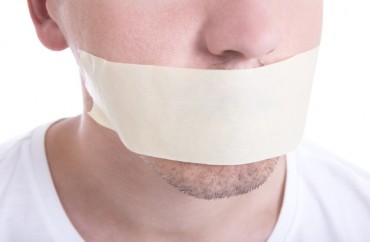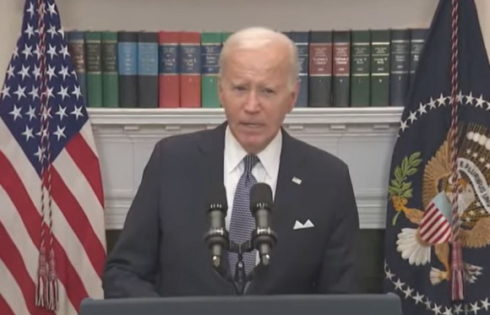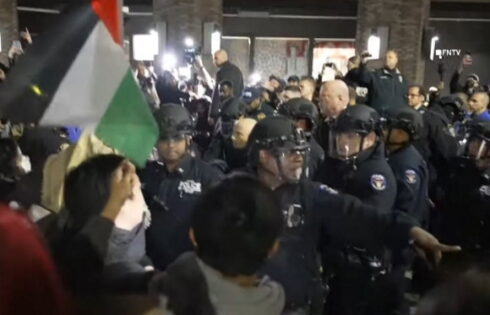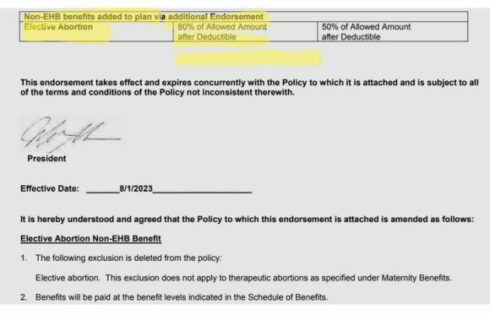
Previous study had pushed back on perceptions of ‘left-wing McCarthyism’
Nearly 20 years ago, Smith College student Erin Dow conducted a study about students’ views concerning free speech. She found that students who identified as “strongly liberal” were more tolerant of free speech than students as a whole.
Many years later, student Julie Voorhes and government professor Marc Lendler conducted a follow-up study as part of Voorhes’ senior thesis at the women’s college.
It asked students similar questions, and found that students identifying as strongly liberal were becoming far less tolerant of free speech.
Their resulting paper was published in September. Voorhes and Lendler went into the study “under the assumption that we would observe increased skepticism towards free speech rights” but were surprised at the “magnitude of the changes we observed,” Voorhes wrote for Heterodox Academy last week.
[Editor’s note: The full study may require the creation of an account to view.]
Dow’s study, published in 2002, pushed back on the notion that “left-wing McCarthyism” existed on the part of strongly liberal students. The new study, started in 2016, reached a much different conclusion.
As Voorhes and Lendler explain in their study, Dow found that “there are mixed views about speech rights, but that it was emphatically not true that the more liberal students were, the more they supported censorship of right wing speech.”
The 2016 study, by contrast, found “a sharp decline in the priority Smith students give to free expression in relation to ‘social justice’ concerns, and an escalated skepticism about speech rights among those who describe themselves as ‘strong’ liberals,” Voorhes wrote for Heterodox Academy.
Both Voorhes and Lendler cautioned against reading the free speech issue on a left-right axis. Lendler told The College Fix in an email that the Supreme Court does not divide the issue along strictly left-right lines:
[Justices Antonin] Scalia and [Ruth Bader] Ginsburg voted together to establish that flag burning was a protected form of protest. [Sonia] Sotomayor and [Clarence] Thomas voted together to permit the awful Westboro Baptist Church to protest at the funerals of American soldiers. [Samuel] Alito dissented in that case, but wrote the opinion for a unanimous Court in the next free speech case, the Slants case.
Student body shifts toward extreme, support for abstract principles falls
One of the most striking differences between the two studies’ conclusions was the percentage of Smith students identifying as “strongly liberal.” In 2000, 15 percent of students identified as “strongly liberal,” while half of respondents simply identified as “liberal.”
By 2016, the student body had shifted distinctly toward the left, with 63 percent of students identifying as “strongly liberal,” and a combined 35 percent of students identifying as “liberal” or “moderate.” Less than 2 percent of students surveyed identified as conservative, the study found.
Another feature of the two studies presented abstract statements about principles of free speech, and found they were becoming less supported.
The first statement was: “Free speech should be granted to everyone regardless of how intolerant they are of other peoples’ opinions.” In 2000, 70 percent of Smith students agreed. In 2016, just 47 percent did.
The second statement was: “Smith College should encourage the free exchange of ideas, no matter how offensive those ideas are to some students.” This plummeted from 73 percent agreement in 2000 to just half in 2016.
The next section showed increased support for censorship. Support for Smith College to “establish rules about what type of language students can use on campus, in order to keep debate reasonable,” jumped from 40 percent in 2000 to 56 percent in 2016.
“Smith College should insist that individuals respect racial and religious minorities in exercising speech rights” garnered 47 percent support in 2000, and jumped to 62 percent in 2016.
A further aspect of the study presented students a specific example of symbolic speech: One student hung a defaced American flag in a dorm window, and another student hung a Confederate flag in a window. Students were then asked if each flag should be removed, or should stay.
In 2000, around 20 percent of students would require both the defaced American flag and the Confederate flag to be removed, while around 60 percent of students said that they would allow both flags to stay.
This showed that “previous Smith students demonstrate clear consistency, granting speech rights equally to liberal and conservative expression,” according to the study.
But in 2016, three times as many students (63 percent) said the Confederate flag should be removed, while giving largely the same response as 2000 on the question of the defaced American flag.
LGBT students’ views shift drastically
The shift didn’t just happen in students identifying as strongly liberal, but also in students identifying as LGBT.
Dow’s study found that not only was there “no evidence of group censorship” among LGBT students, but that LGBT students actually “scored about 20 percentage points more tolerant than heterosexual students,” the Voorhes/Lendler study explained.
In contrast, students identifying as heterosexual were generally more libertarian than their LGBT counterparts on both abstract and specific questions of censorship and free speech in the 2016 study: “LGBT students tend to demonstrate much stronger support for a social justice perspective of speech rights.”
The Voorhes/Lendler study found that on the question of the displaying of the flags, 11 percent of LGBT students said a defaced American flag should be removed, while 71 percent believed the Confederate flag should be removed.
This pattern continued along other questions the study asked. For example, students in the Voorhes/Lendler study showed more support for a professor’s censorship of a white, male student who makes sexist comments than an African-American student who makes anti-white comments. Both examples received more support for censorship among both heterosexual and LGBT students.
Another example involved the “issue of Islamophobic speech” in the form of an “Islamophobic cartoon,” although the cartoon is not visible in the study.
“Therefore, it is likely that LGBT students in 2000 reflected strong libertarian values in their responses to both left and right speech because they had learned those values from demanding their own speech rights in the face of discrimination,” the Voorhes/Lendler study speculated.
Study’s authors speculate on causes
“The view that government should not determine what speech can be heard is one of the building blocks of our system, but is unfortunately under challenge from left and right,” Lendler told The Fix.
He also reiterated that the study could not answer the question of exactly why these shifts occurred.
“It’s not hard to understand why the liberal side of the spectrum moved left sometime in the mid 2000s–dissatisfaction with George Bush, rejection of the war in Iraq, and the 2008 financial collapse,” he wrote.
Voorhes also speculated on the causes of the shifts in student opinion.
“The 2016 survey presented two important findings: first, Smith students had moved well to the left of the political spectrum over the years, and second, unlike the 2000 survey, strong liberals are now the least libertarian group on campus,” she wrote in an email to The Fix. “Clearly, there is a strong correlation between movement to the left and increased support for censorship.”
“Of course, we cannot conclude a causation from a correlation, but it is not unreasonable to suggest that because today’s students have grown up in a highly polarized political system, whereby each side demonizes the other, the notion of permitting opposing views has become increasingly difficult to internalize and put into practice.”
Voorhes later echoed Lendler’s point that the issue of free speech is not a liberal or conservative one. She stressed that it was an issue of individual rights.
“The focus is on liberal students because they often dominate elite liberal arts colleges — where many of the high-profile events have taken place,” she wrote. “But I’m not convinced that this penchant for censorship is particular to highly liberal students alone.”
“I do want to reiterate that in 2001 those who said they were ‘strong liberals’ were more, not less, tolerant of ‘the thought they hate’ than students as a whole,” Lendler wrote.
MORE: Free speech on campus has become weaponized, Congress told
MORE: Ohio University throws open campus to free speech
IMAGE: Shutterstock
Like The College Fix on Facebook / Follow us on Twitter




Please join the conversation about our stories on Facebook, Twitter, Instagram, Reddit, MeWe, Rumble, Gab, Minds and Gettr.